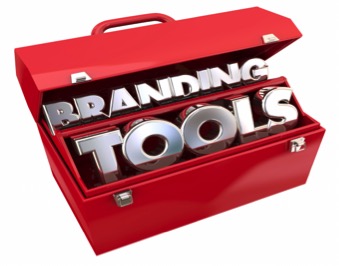
What makes a Coke different from a Pepsi? What makes a Ford pickup truck different from a Chevrolet? What makes an Apple iPhone different from a Samsung Galaxy? While these six products occupy three very different categories, the main thing that makes each one different from its key competitor is branding.
After all, when you get right down to it, each one does exactly what its rival does. Some people simply prefer what Coke, Ford and Apple represent. If you want to create a similarly loyal following for your business, take a moment to consider these branding tips for beginners.
Know Yourself First
How is your offering different from the other players in your space? What can you provide that they do not? Why should anyone buy from you? What value do you add to your customers’ lives? What problem(s) do you solve? Why does your business even exist? Yes, you started it to make money, but you need a compelling reason for being able to do so.
Know Your Customer Too
How old is your ideal customer? What’s their primary gender identity? Are they married? Where do they live? Did they graduate from college? Do they have a post-grad degree? How do they earn their living? Are they hourly workers, salaried employees, corporate executives, self-employed entrepreneurs or freelance professionals? What do they do with their leisure time? What are their biggest challenges?
After you’ve determined to whom you’re talking, it becomes easier to communicate your values in a resonant fashion. It helps to form an image of that person in your head, give them a “name,” an identity and “a life.” Your look, tone and even your product line will vary depending upon who you determine your ideal customer to be.
Craft Your Image
If you take all of the above into consideration, your brand personality will pretty much develop itself. This knowledge will determine the types of words you employ and your color scheme. It will even inform your choice of the font type you’ll choose for your site, advertisements, social media presences and ancillary marketing materials. Your logo design should also be reflective of these factors. Using a logo generator makes it easy to come up with a memorable symbol for your business.
Let it Evolve
You’ll come up with something that has meaning if you let your knowledge of yourself and your customers inform your decision. Forcing an image onto your business won’t work. You have to let your brand tell you what it wants to be. Once you’ve embraced that reality, your efforts will take on an organic nature to which the right people will easily relate.
Branding Takes Time
If you’re consistently relentless and unwavering, the marketplace will eventually begin to associate your company with a certain set of attributes—or detriments. Which way they go is completely up to you. In other words, you’d better stand for something, or the marketplace will fall for whatever somebody else says about you. Either way, it will take time. So craft your persona, do everything possible to embody it in everything you do and you’ll come to be recognized for it.
These branding tips for beginners will help you put a face on your business to communicate what you stand for. People tend to buy things based upon their emotions. Giving them a compelling reason to feel good about buying from you is a strong first step toward building a loyal customer base and repeat business.